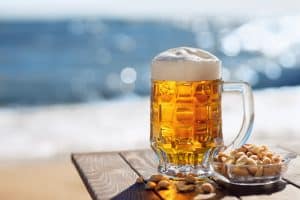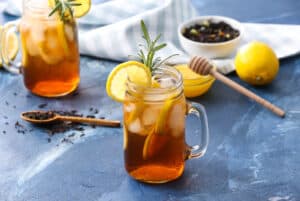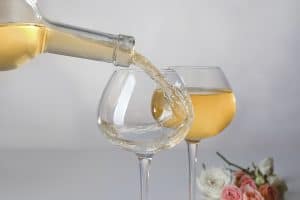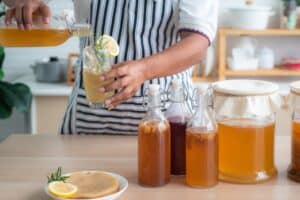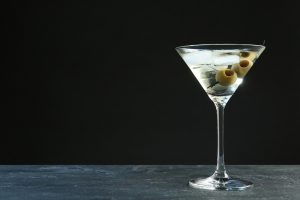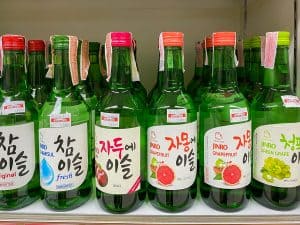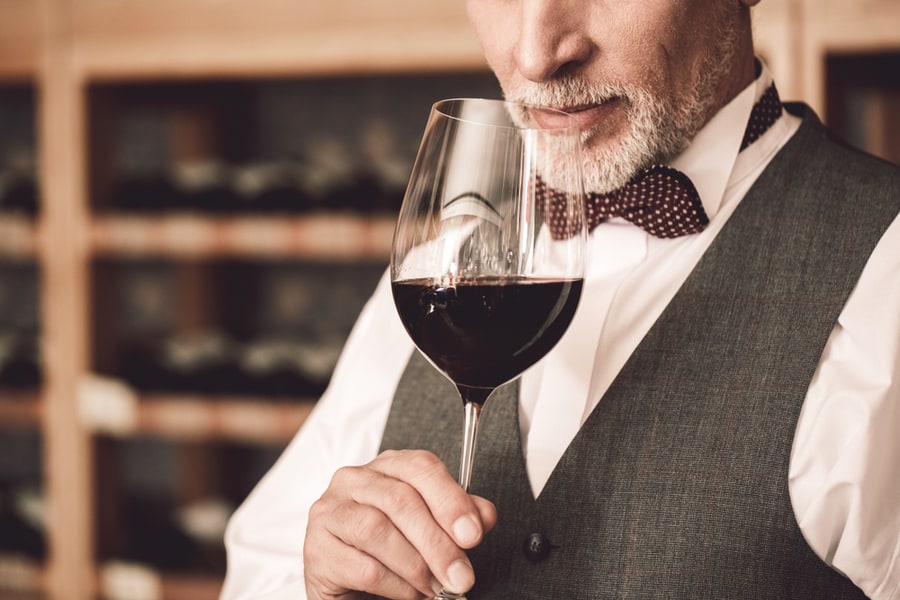
Zinfandel and Cabernet Sauvignon are red wines, and each is popular in its own right. They both have distinct taste profiles which makes them difficult to compare, but that’s where the beauty lies—you can choose which one you prefer.
Read on to discover the differences (and similarities) between Zinfandel and Cabernet Sauvignon.
Zinfandel’s origin is uncertain but likely Croatia, while Cabernet Sauvignon originated in Bordeaux, France. Zinfandel is mainly produced in California and has a high alcohol content of 14-17% ABV, while Cabernet Sauvignon is made worldwide and has an ABV of 13.5-15%. Zinfandel is bold and full-bodied with medium tannins, while Cabernet Sauvignon has medium-high tannins.
We’ll explore the differences between Zinfandel and Cabernet Sauvignon, briefly examining each grape’s history. Next, we’ll discuss the factors influencing a wine’s taste with descriptors of each wine’s body, taste profile, acidity, alcohol content, and tannins.
Finally, we offer some food pairing ideas. We’ve put together this judgment-free and non-pretentious guide to help you understand the difference between Zinfandel and Cabernet Sauvignon.
Exploring Zinfandel and Cabernet Sauvignon
Sometimes, Zinfandel gets a bad rap and is considered ‘not up there’ with Cabernet Sauvignon. However, ‘serious’ wine drinkers think Cabernet Sauvignon is a ‘serious’ wine. It is usually a safe choice when ordering from a wine list or buying a bottle at the store because it’s a ‘dependable’ wine.
On the other hand, Zinfandel is often snubbed and not considered a ‘serious’ wine by connoisseurs. We hope the guide below will shed some light on the differences between them and help you find a wine that appeals to your tastes. Or maybe you’ll find a new favorite!
Our investigation will focus on Californian Zinfandel and Cabernet Sauvignon. Still, we’ll also reference French/Bordeaux Cabernet Sauvignon because it is where the wine originated and is used as the yardstick when other Cabernet Sauvignons—such as its Californian counterpart, are compared.
History

Zinfandel grapes’ history is shrouded in mystery, and the origin is lost to the mists of time. There is no consensus about Zinfandel’s history, but evidence points to Croatia as the birthplace of these unique grapes.
They arrived in America either through Austria or Italy. There’s some dispute about which country exported it first to Boston, Massachusetts before it started its journey to California’s vineyards.
Prohibition nearly drove these unique grapes to extinction, but thankfully they survived. Its popularity can partially be attributed to a British wine writer who described the wine as ‘fascinating’ and only grown in California.
Of course, the latter statement is a bit of a fabrication because Zanfandel’s notable regions, apart from California, include Apulia (also known as Puglia in Italian) and Dalmatia (a region in Croatia).
Cabernet Sauvignon grapes are a happy accident when two important Bordeaux varieties, Sauvignon Blanc and Cabernet Franc, were naturally crossed. Carole Meredith and John Bowers, researchers at UC Davis, shocked the world in 1997.
They discovered that Cabernet Sauvignon was the child of the white grape variety Sauvignon Blanc and Cabernet Franc. When you compare the leaves of Sauvignon Blanc with those of Cabernet Sauvignon, you’ll notice they look very similar—without human intervention, miracles such as a white grape giving rise to a red variety can happen.
Body

What exactly is meant by a wine’s body? To be honest, it is a term frequently used in the world of wine, but few of us dare to ask what it means. So, let us help each other out. The best analogy we’ve come across when describing a wine’s body is as follows: think of the wine’s ‘weight’ in your mouth.
As a scale, water is the light body, and heavy cream is the heavy body. Or, in other words, how ‘full’ does the wine feel in your mouth? A simple yet effective way to imagine things when you reencounter the term.
Zinfandel is known for being full-bodied. As a result, it will feel ‘full’ and ‘heavy’ in your mouth when you drink it.
Cabernet Sauvignon is also a full-bodied wine and generally fuller than most red wines.
Taste Profile
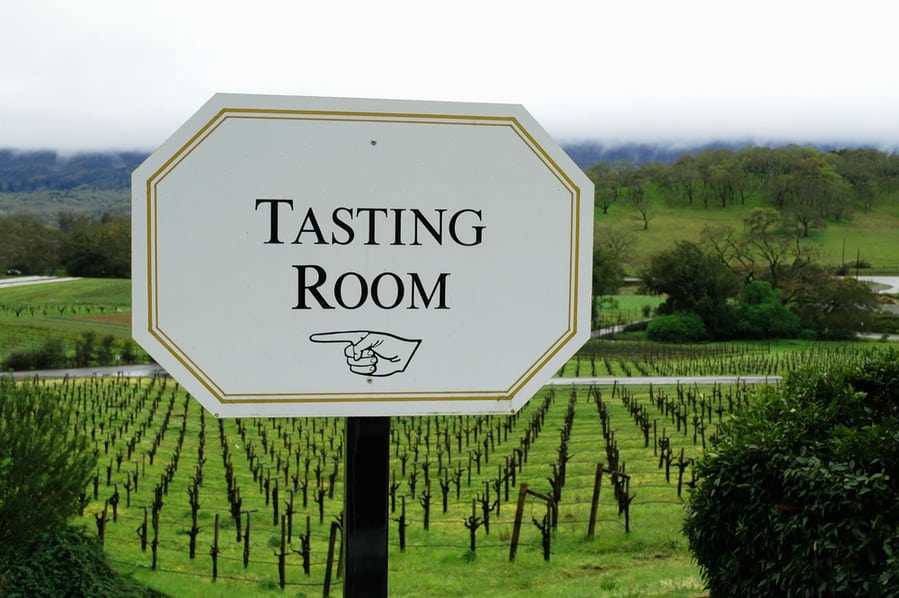
Both are considered dry red wines, meaning they don’t taste sweet. But what else will you taste when you pour a glass?
Zinfandel
Zinfandel offers cherry tastes or sometimes leans towards strawberry fruitiness. Because it is lower in tannins than Cabernet Sauvignon, it makes it a smoother drinking wine.
On the nose, you’ll pick up intense aromas of red and black fruits such as raspberry and blackberry. When you take your first sip, an explosion of flavors awaits you. Zinfandel is a full-bodied and round wine with flavors such as raspberry, plum, blackberry, pepper, spices, and a hint of smoky notes.
People often use the word ‘jammy’ to describe Zinfandel; it means the wine’s taste is rather intense but not overwhelming. This wine is also known for its inconsistency regarding fruit tastes.
Sometimes you’ll pick out red berries, other times blackberries, and then they all come together. There’s no telling what you’ll get, which makes Zinfandel an exciting wine and by no means an inferior wine either!
The grapes adapt to the area where they are grown, and this influences the taste of the wine:
- Napa Valley wines tend to taste of dark berries combined with high acidity (perhaps the closest we’ll get to the taste of French Cabernet Sauvignon for a wine made on American soil)
- Sonoma’s wines are rich and bold, with cocoa and spice at the forefront
- Paso produces wines with lighter bodies with floral notes and red berry notes
- Lodi’s Zinfandels tend to have smoky notes and chocolate and red fruit tastes.
Cabernet Sauvignon
Cabernet Sauvignon is the world’s most famous red grape and one of the most popular varietals in the world. Three words sum up Cabernet Sauvignon perfectly: bold, big, and dry. You’ll pick up tastes like plum, blackberry, cassis, spice, espresso, and earthy notes (sometimes called forest floor).
Other flavors you can identify in a Cabernet Sauvignon include cedar, green pepper (more about this in a moment), black cherry, black currant, and blackberry. On the nose, you’ll notice slight herbaceous smells, spices, oak, tobacco, and dark fruits in addition to the black currant notes.
French Cabernet Sauvignon is primarily known to have tasted like pencil lead, anise, black currant, plum sauce, and tobacco leaf. The Californian Cabernet Sauvignons follow the same taste profile as its French counterpart. Nevertheless, you’ll also note hints of mint in the wine.
Bordeaux grapes other than Cabernet Sauvignon (Merlot, Malbec, Cabernet Franc, Carménère, and Sauvignon Blanc), called the Bordeaux Varieties to have a distinct hint of green bell pepper in their tastes.
This is because an aromatic compound known as methoxypyrazine is found in green bell peppers and can also be found in grapes and, finally, on the nose.
Because many consumers prefer their wines to taste fruity, viticulturists learned to prune it ‘out’ of the vine and wine through special pruning techniques and thus reducing the ‘greenness’ in the wine.
Acidity

A wine’s acidity is one of the four fundamental characteristics people usually refer to when drinking and tasting wine (the other three are tannin, sweetness, and alcohol level). The TL;DR of acidity is: acidity keeps a bottle of wine fresh and contributes to the wine’s balance.
Additionally, the lower the acidity, the longer a wine can be stored and aged. For a more in-depth discussion, take a look here.
One way you can tell how acidic a wine is is to check whether your mouth waters after taking a sip. The more saliva you produce, the higher the acid content. The acidity also influences the type of food you’d serve with the wine.
Whether it will bring out the best in your wine and food or totally wreck one another—we’ll discuss food pairings later.
Zinfandel is known for its medium and balanced acidity.
Cabernet Sauvignon has a medium to medium-high amount of acidity. However, it is usually balanced well, so you don’t think you’re sucking on a lemon.
Alcohol Content
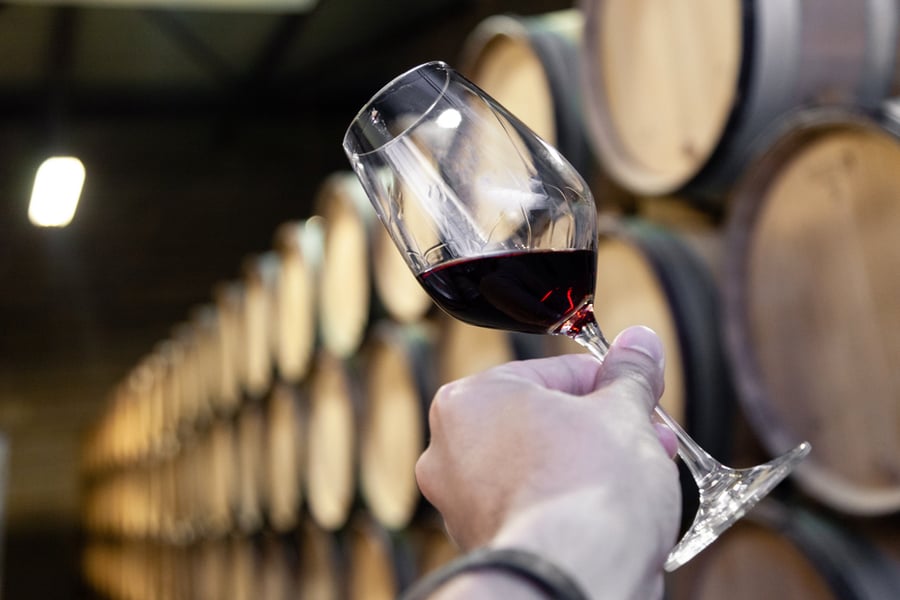
Without alcohol, wine would just be good ol’ grape juice—not that there’s anything wrong with good quality grape juice! However, the alcohol content of wine also plays an essential role in preserving the flavors and aromas as well as the structure of the wine.
Here are three essential factors about alcohol in wine and how it impacts the taste:
- It brings harmony to the other ingredients, namely tannins, sugar, and acidity. For example, too much sugar and too little alcohol will make the wine unbalanced and taste like a soft drink without much taste. Or the reverse: too much alcohol not balanced by tannins, sugar, and acidity will make it ‘hot’ like a strong liquor and not a pleasant drinking experience.
- Alcohol helps to give the wine body—lower alcohol levels result in light and delicate wines. In contrast, high alcohol levels give wines a full body on the palate.
- Our genes influence how we perceive alcohol and thus amplify the sensory experience of tasting bitterness or sweetness in the wine.
Zinfandel is known for its high alcohol content, which brings out those jammy fruit flavors and gives the wine its rich body and palate feel. This wine packs quite a punch with an ABV ranging between 14% and 17%, adding an ‘oily’ texture and mouthfeel to the wine.
Cabernet Sauvignon has a medium-high ABV, between 13.5% and 15%, so many recommend drinking it alongside a meal because. However, it can be a bit overwhelming on its own, and we’ll look at food pairings later.
Tannins

Without going into too much detail about tannins, let’s do a quick 60-second rundown:
- Tannins occur naturally in a wide variety of plants, and a grape’s seeds, skins, and stems.
- Plants use it as a bitter-tasting deterrent to stop animals from eating the fruits or leaves before they are fully ripe, but we humans have figured out how to use tannins to our benefit.
- Tannins are naturally found in food and beverages we consume daily, like chocolate, coffee, tea, and nuts.
- Tannins are also found in the wine barrels used to age wines.
- High levels of tannins in a bottle of wine can aid wine in aging for decades.
You can determine whether a wine has a high tannin level by paying attention to how your mouth feels after a sip—high tannins will make your tongue feel dry. If you’re still curious about tannins, here’s a Tannins 101 for you.
Tannin comes from the skin, seeds, and twigs of the grapes during the winemaking process. You can tell a wine has high tannin if it dries out your tongue. It also imparts almost a bitter flavor.
Zinfandel is usually softer in tannin but can range between medium and medium-plus. The high alcohol levels and tannins contribute to the wine’s bold taste.
Cabernet Sauvignon’s medium-high levels of tannins may let it come across as slightly astringent; that’s why it’s best to pair it with food.
Food Pairings

If pairing food and wine was an Olympic sport, all of us would have been gold medal winners!
The ancient Greeks loved drinking wine while hosting banquets with all kinds of meats and loaves of bread, and hosts served guests wine with their food (just think of all the food and wine that was served in Homer’s The Odyssey). They even offered wine and food to the gods.
So, it is safe to say that wine and food have walked hand-in-hand throughout history, and even today, this is true.
Pairing or serving wine with food is always a personal choice. You might find that certain wines work better with your combinations of spices and cooking techniques. That’s perfectly fine. There are no hard and fast rules.
You don’t have to slavishly follow traditions that dictate red wine with red meats and white wine with white meats.
Ever tried French fries and Champagne? If not, try it and see how beautifully they complement one another. This combination works simply because French fries bring fat and salt. Champagne has the acidity to cut through the fat, and the salt elevates all the flavors. Talk about a party in the mouth!
A general rule of thumb for Zinfandel and Cabernet Sauvignon food pairings is that fattiness is your best friend. The higher alcohol levels and tannins need something to ‘grip,’ and if there isn’t fat, it will be your mouth leaving your mouth and tongue feeling dried out.
The alcohol also cuts through the fat and enhances the flavors: “Where there’s fat, there’s flavor,” according to Chef Gordon Ramsey.
Zinfandel and Cabernet Sauvignon go well with a barbeque’s sweet and spicy flavors, complementing the wine’s fruitiness. Fuller (higher alcohol content) wines pair beautifully with beef and pork, whereas lighter versions and chicken work well together. Bacon brings fattiness and saltiness to the party.
Those high alcohol levels need something to cling to, and bacon answers this order perfectly. Want to blow your guests away? Serve them Bacon Cheeseburgers, or follow this recipe for the ultimate burger experience.
The bolder the cheese, the bolder the wine should be, and cheddar fits this bill perfectly. Strong, aged cheddars can stand up to the wine’s bold tastes. If your Zinfandel has smokey notes, smoked cheese will also be perfect. Cabernet Sauvignon is best not paired with smoked cheddar or other smoked cheeses, but a mild white cheddar will pair perfectly.
Both wines are excellent accompaniments to charcuterie boards because there’s a medley of meats, cheeses, and other accompaniments, such as olives and vegetables, if you choose. It also allows you to experiment with different tastes alongside your wine.
Consider e keeping a notebook handy and making it a game to see who can come up with the best possible combination.
Conclusion
Zinfandel and Cabernet Sauvignon are bold red wines with many differences. Choosing the best wine that suits your taste boils down to what you consider essential in a glass of wine. Zinfandel is the answer if you want a bold, easy-drinking, high-alcohol red wine.
Cabernet Sauvignon is the one to choose if you like exciting flavors but a lower ABV. Cabernet Sauvignon is the more traditional choice, but sometimes we need to break with tradition, expand our horizons, and crack open a bottle of Zinfandel.
Whichever you choose, enjoy your wine. Or, invite a few friends over, put together a charcuterie board, and compare both wines side-by-side to discover each one’s merits.

